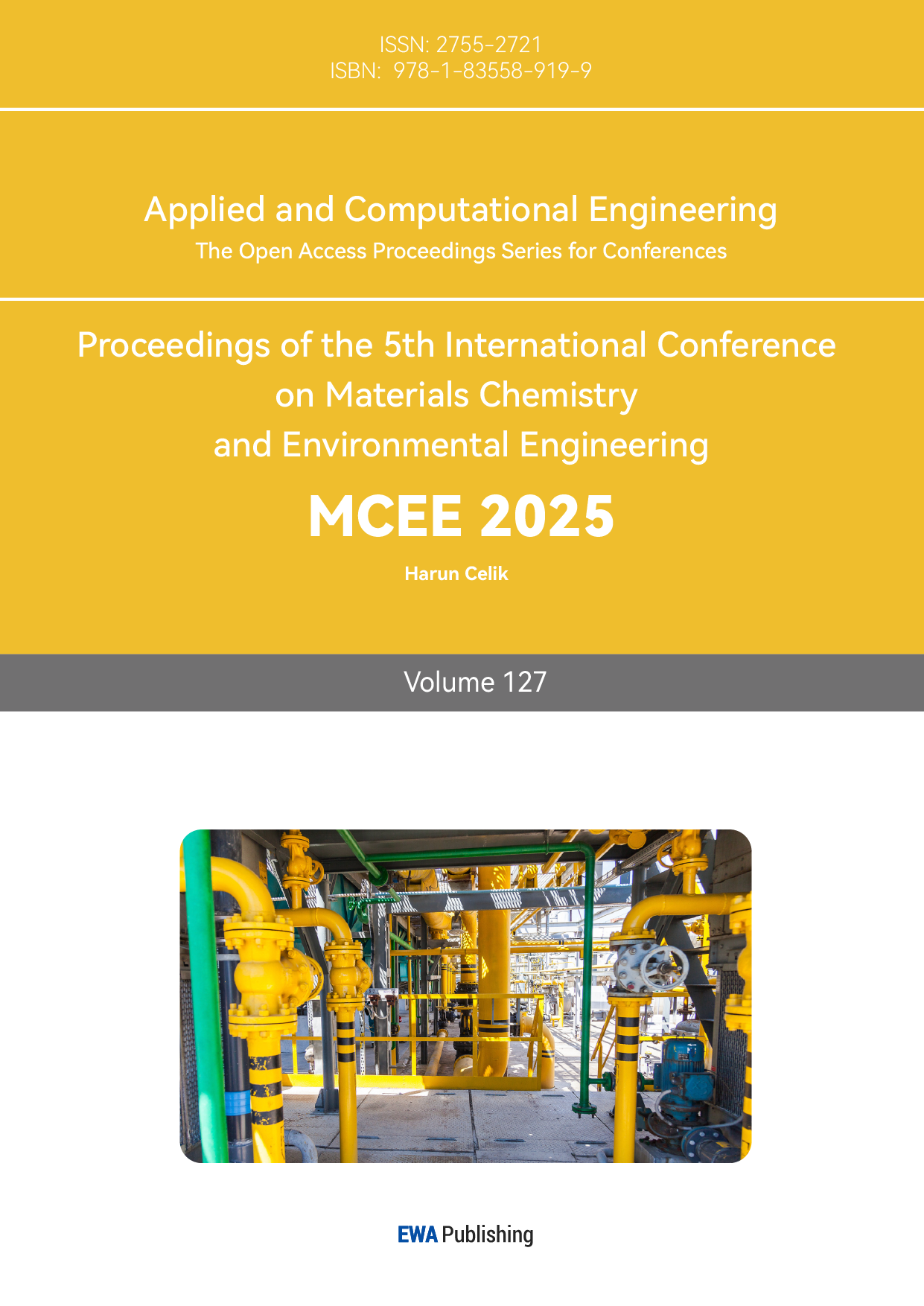1. Introduction
Energy serves as a vital resource for human society, underpinning economic operations and exerting a profound influence on the quality of life and social stability. People depend on energy for their everyday activities, including transportation, utilization of electronic devices, shopping, and entertainment. Consequently, a reliable and efficient energy supply is intrinsically tied to the overall quality of life. In the realm of industrial production, it is also the case, as factories necessitate considerable amounts of electricity and gas. The consistent availability and efficient utilization of energy are decisive factors in determining production efficiency and costs, ultimately shaping the competitive landscape of enterprises.
Currently, our quest to explore extreme environments has intensified accompanied by science and technology progress, significantly contributing to societal development. Consequently, the study of energy utilization technologies in such harsh conditions has become increasingly urgent. Ensuring a stable and efficient energy supply is crucial for sustaining life and work continuity in these environments. Therefore, addressing the energy needs of extreme environments, such as space exploration and deep-sea missions, has emerged as a critical mission for researchers. These studies not only foster innovative approaches to energy utilization but also offer pivotal support for human survival and development in such challenging settings.
Solar energy has gained significant attention owing to its renewable and environmentally friendly nature. Solar panels utilize the photovoltaic effect to convert sunlight into electricity, addressing global energy demands. Recently, lead-halide perovskite solar cells (PSCs) have emerged as a popular choice due to their high efficiency and low cost.[1] Perovskite is an innovative material with a wide range of applications in the energy sector. It offers several advantages, including high photoelectric conversion efficiency, low production costs, flexibility, lightweight properties, broad applicability, and environmental sustainability. Therefore, the PSCs provide numerous benefits. Firstly, they represent a cost-effective alternative to traditional silicon-based solar cells, as they avoid the complex and expensive manufacturing processes associated with silicon. Perovskite materials can be applied through methods such as spin coating, inkjet printing, and evaporative deposition, making large-scale production more feasible and reducing the overall cost of solar energy production. Additionally, the availability of raw materials, like lead, further enhances their economic viability.[2] In recent years, the efficiency of perovskite solar cells has significantly improved, rising from just 3% a few decades ago to over 30% today
PSCs have rapidly developed over the past few decades. The raw material for perovskite solar cells was originally used by Miyasaka as a dye for sensitizing solar cells.[3] Three years later, in 2012, Henry Snaith enabled perovskites to be used as light absorbers, which proved that perovskite is an effective photovoltaic material. In early 2018, Sahli, Werner, and colleagues developed a novel deposition process at EPFL to produce the first perovskite/silicon tandem solar cell that met the industry standard for monocrystalline silicon, increasing the power conversion efficiency (PCE) to 27.3%, the first time that a perovskite/silicon tandem solar cell surpassed the efficiency of a single-junction silicon cell.[3] In September 2024, Liu reported on a unique double-layer interface passivation strategy for perovskite/silicon stacked solar cells. This approach achieved a certified stable power conversion efficiency of 33.89%, surpassing the single-junction Shockley-Queisser limit of 33.7%.[4]
In this work, the key properties of PSCs, including their unique crystal structure and excellent optical and electrical characteristics were introduced and discussed, which highlight their potential in photovoltaic and optoelectronic applications. Then the needs and applications of PSCs in extreme environments were deliberated, where a stable energy supply is crucial for sustaining life and work. Studying these applications is essential for exploring new energy utilization methods and supporting human survival in harsh conditions, such as space and underwater environments, as well as in high temperature and humidity. In these extreme conditions, PSCs face challenges from temperature fluctuations, light intensity, and spectral variations, all of which impact their performance and stability.
2. Basic properties of perovskite cells
2.1. Perovskites cells technology
Perovskites are materials with an ABX3 crystal structure that possess good thermal stability and are cost-effective[5],as shown in Figure 1. Perovskite molecules possess a unique molecular structure that grants them exceptional optical and electrical properties. These include high optical absorption capacity, impressive photoelectric conversion efficiency, and good thermal stability, all of which demonstrate their vast potential in photovoltaic and optoelectronic applications. The perovskite solar cells consist of six main components: a transparent conductive layer (TCO), a substrate, an electron transport layer (ETL), a hole transport layer (HTL), and a metal electrode packaging layer.
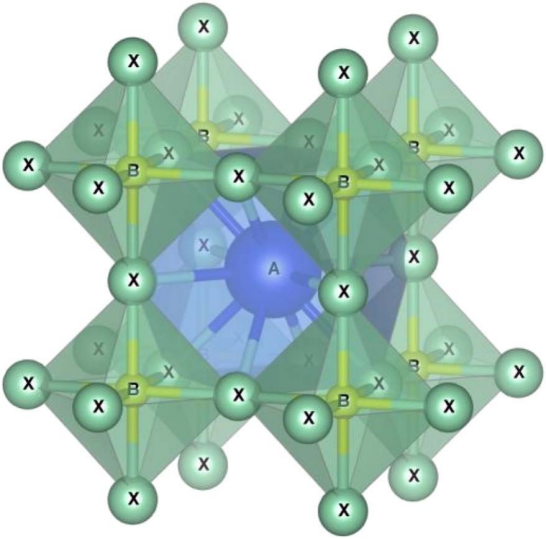
Figure 1: ABX3 crystal of perovskite materials.[5]
Transparent conductive layers in solar cells typically use materials like indium tin oxide (ITO) and fluorine-doped tin oxide (FTO). These thin layers maximize light entry into the perovskite active layer and effectively collect current, enhancing photoelectric conversion efficiency. Perovskite solar cells have two substrate types: flexible and rigid. Flexible substrates suit lightweight applications, while rigid substrates offer stability for stationary systems. The electrodes consist of an anode and a cathode, made from materials that ensure good flexibility and conductivity. The electron transport layer (ETL), primarily made of titanium dioxide or zinc oxide, efficiently transports generated electrons to the cathode, further enhancing photoelectric conversion efficiency. The hole transport layer enables excited perovskite holes to reach the metal cathode, with the graphene structure enhancing this transport efficiency[6].
2.2. Perovskites cells optical properties
The photophysical processes in perovskite materials involve several key steps: optical absorption, thermalization, exciton formation and dissociation, carrier migration, composite processes, and both radiative and non-radiative pathways for energy release, leading to photoelectric conversion. Initially, when photons are absorbed, an electron transitions from the ground state, creating an electron-hole pair. Following this, the excited charge carriers lose energy through interactions with the crystal lattice, resulting in the formation of highly delocalized Wannier excitons. After thermalization, some of these excitons spontaneously dissociate into free carriers. The free carriers then migrate through the material towards the electrode. They may recombine through various mechanisms, including geminate recombination (where electrons and holes of excitons recombine), trap-assisted recombination (which occurs due to material defects), and Auger recombination (which involves three particles and is more prevalent at high carrier concentrations). Once the excited carriers release energy through either radiative or non-radiative pathways, the separated free carriers are collected at the electrode, generating a current for photoelectric conversion. The effectiveness and efficiency of these processes significantly influences the properties and stability of perovskite materials in optoelectronic applications.
The spectral response range of perovskite molecules generally includes visible and near-infrared bands. Multispectral detectors that utilize gradient band gap perovskites can cover a response range of 450 to 790 nm, achieving a high spectral resolution of approximately 25 nm. Specifically, the KMAPbClxBr3-x perovskite-based detector can attain a spectral response range of 450 to 780 nm, featuring an external quantum efficiency exceeding 90% and an ultrafast response time of 71 ns.[7] The band gap, which corresponds to the highest absorption, is approximately 539 nm.[8]
3. Requirements and applications of perovskite cells in extreme environments
Compared to the usual terrestrial environment, cosmic space presents an extremely challenging environment. Notably, numerous constraints restrict the advancement of PSCs in both space and underwater environments. In space, the ultra-high vacuum conditions, extreme temperatures, as well as exposure to various high-energy charged particles and radiation can significantly affect the PCE of PSCs. On the other hand, in the underwater environment, the spectrum composition, light intensity, water temperature, depth, and water quality are among the key influencing factors that impact the functionality of PSCs.[9]
3.1. Requirements and applications of perovskite cells in the space environment
Perovskite batteries need to meet the requirements of high performance, high specific power, and long-term stability in the space environment application, as shown in Figure 2a. In outer space, spacecraft mainly use crystalline silicon and group III-V semiconductor solar cells to capture solar energy because of their high-power conversion efficiency (PCE) and excellent long-term stability, as shown in Figure 2b. However, the demand for efficient space solar cells has now risen significantly. In addition to having high PCE and stability in both limited space and extreme environments, lightweight and low cost are also very important. PSCs are a strong competitor in the next generation of space solar cells due to their significant advantages over silicon and III-V compounds in terms of efficiency, cost, specific power, and radiation resistance, as shown in Figure 2b.[10]
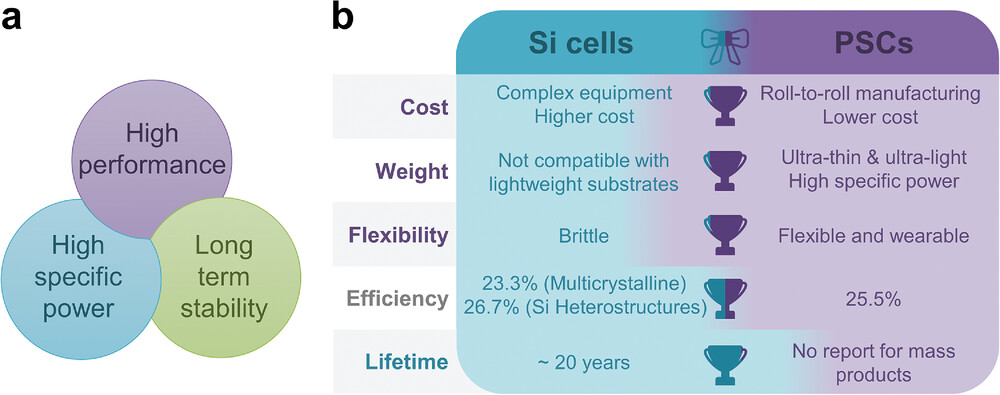
Figure 2: a Specific requirement for PSCs and comparison between Si cells and PSCs. b Factors affecting PSCs’ performance in space.[10]
In the challenging environment of space, perovskite cells confront three major factors: intense radiation, vacuum conditions, and extreme temperature variations. Radiation primarily comes from solar cosmic rays, galactic cosmic rays, and radiation belts, including gamma rays, X-rays, and protons. These high-energy particles threaten both spacecraft and astronauts, as they can induce ionization and atomic displacement in materials, leading to accelerated degradation. This can diminish solar cell output, damage electronic components, and even render spacecraft inoperable, highlighting the importance of addressing these "shadowless killers" in human space activities. Additionally, sunlight in space contains more ultraviolet rays and results in a total radiation intensity of 136.7 mW cm−2 in the AM0 solar spectrum. Most solar efficiency measurements are based on the AM1.5 spectrum, which does not account for the conditions in outer space, where cells are less efficient due to lower spectral responses in the infrared and ultraviolet ranges. Furthermore, as altitude increases, air pressure drops significantly, exemplified by the International Space Station’s pressure of about 10−5 to 10−6 Pa. This high vacuum exposes spacecraft to harmful radiation while complicating heat conduction and dissipation. For example, spacecraft can reach temperatures between 100 and 130 °C in sunlight and drop to −200 to −150 °C when shaded. Temperature cycles of −100 °C to 100 °C occur every 45 minutes for solar panels in orbit. In a vacuum, heat exchange relies solely on conduction and radiation, leading to potentially damaging temperature fluctuations. Addressing these challenges is vital for the success of future space missions.[10]
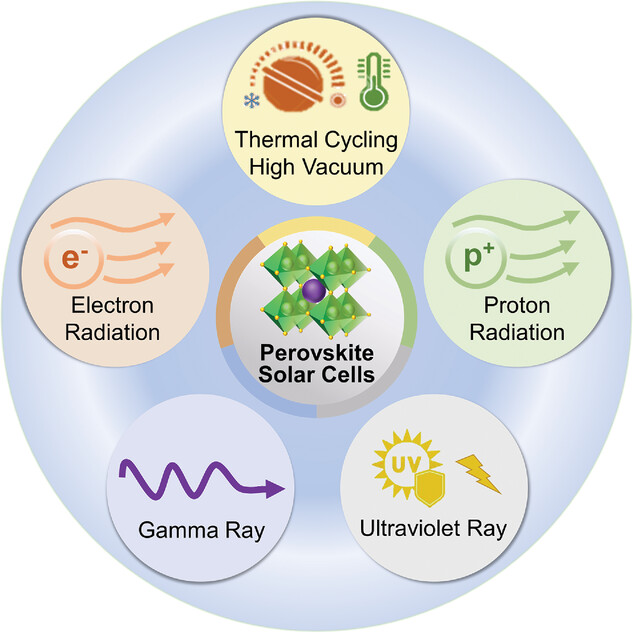
Figure 3: Factors affecting PSC's performance in space[10].
For space applications, PSCs must efficiently provide power for satellites, as daily operations depend on them. While PSCs have achieved excellent power conversion efficiencies (PCEs), they need to adapt to varying temperatures and sunlight intensities in space. They must also resist radiation from high-energy particles, particularly in Earth's radiation belts, and withstand damage from intense ultraviolet radiation and atomic oxygen. Ensuring PSCs perform well in these harsh conditions is crucial.
High specific power is essential for space solar cells. Currently, silicon-based cells provide less than 1 W/g, while III-V triple-junction GaInP/GaAs/GaInAs thin-film cells can exceed 3 W/g but are costly and energy-intensive to produce. To minimize launch weight, flexible PSCs using lightweight polymer substrates can achieve a specific power of 23 W/g, significantly higher than silicon or GaAs cells. Their flexibility allows for adaptation to various shapes, facilitating deployment in space. While PSCs offer advantages such as solution processability, their long-term stability is still being improved compared to the 20-year lifespan of silicon cells. Space solar cells must also endure mechanical stress during launch and temperature fluctuations in space. Therefore, robust materials and thorough inspections are necessary to ensure high performance and reliability.[10] To address significant temperature fluctuations in space, scientists suggest using flexible EVA encapsulants for perovskite solar cells. After 250 temperature cycles, the fracture energy of unencapsulated perovskite film stacks doubled, likely due to the strengthening of the PC60BM layer. Incorporating EVA or Surlyn encapsulants can boost the breaking energy by four times. Specifically, the soft EVA encapsulant helps perovskite solar cells retain over 90% of their initial performance after 200 cycles, with minimal delamination. This highlights the importance of low elastic modulus materials for the mechanical stability and 25-year lifespan of perovskite solar cells.[11]
3.2. Requirements and applications of perovskite batteries in the underwater environment
The increasing interest in underwater photovoltaic applications has drawn the attention of researchers. Currently, many underwater devices—such as vehicles, autonomous systems, and sensors are powered by either onboard batteries or solar cells located above the water's surface, as shown in Figure 4(a). For instance, underwater drones primarily rely on electric power; however, depending solely on batteries connected by tethered cables significantly limits their operational range and makes them easier to detect. The underwater environment presents unique challenges compared to terrestrial settings, including factors such as water quality, depth, temperature, light intensity, and spectrum composition, which pose substantial obstacles, as illustrated in Figure 4(b).[9]
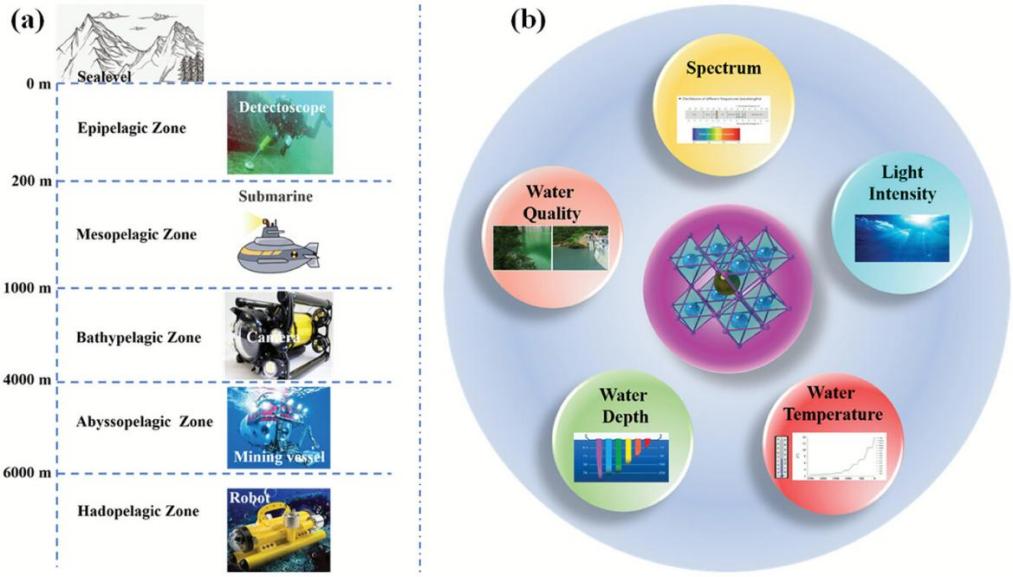
Figure 4: (a) Electrical equipment in the underwater environment and (b) Factors affecting PSC's performance in underwater.[9]
Water Quality: Water contains a variety of chemicals, both inorganic and organic, along with different microorganisms such as bacteria, plankton, and benthic organisms. In transparent water, the primary factor affecting light attenuation is the spectral absorption capacity of the water molecules. In contrast, in turbid water, both absorption attenuation and increased light scattering combine to affect light penetration. Research by Samantaray et al. demonstrated a significant difference in photoelectric conversion efficiency (PCE) between deionized water and seawater. As illustrated in Figure 5a, the PCE of perovskite solar cells (PSCs) in seawater is lower than that in deionized water. Additionally, microbial attachment and corrosion can negatively impact the integrity of equipment.[9]
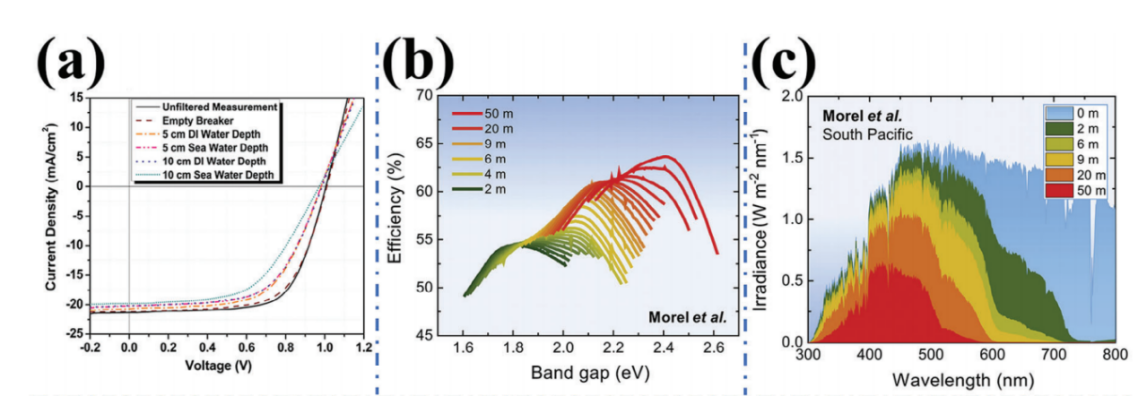
Figure 5: (a) J–V curves of PSCs. (b) Changes of PCE of PSCs under different Eg at various depths. (c) Changes in the solar spectrum at various water depths.[9]
Depth: The optimal Band gap (Eg) for perovskite solar cells (PSCs) varies with water depth. Research indicates that the ideal Eg range for these solar cells shifts from approximately 1.8 eV in shallow water to about 2.4 eV in deeper water. As illustrated in Figure 5b, the maximum efficiency occurs around 2.1 eV at depths ranging from 4 to 20 meters, while the Eg approaches 2.4 eV at a depth of around 50 meters. Remarkably, at a maximum depth of 9.1 meters, the power output reaches 0.7 mW cm⁻², which is adequate to effectively power modern underwater sensor network monitoring systems.[9]
Temperature: In general, the temperature of the sea decreases with increasing depth. Deep-sea temperatures are typically cooler than those in shallow waters. Seawater temperatures are influenced by solar radiation and ocean currents. For example, at depths of the first 500 meters, temperatures usually exceed 10 °C, while in the abyssal zone, temperatures can drop to about 3 °C. In even deeper areas, temperatures can reach around 0 °C. It is important to note that in colder water conditions, the efficiency of solar cells can increase slightly. This is due to a reduction in the rate of radiative recombination at lower temperatures.[9]
Light intensity: Around 2% of solar energy is reflected into the atmosphere at the sea's surface due to the interaction between air and water. Approximately 27% of the incident’s energy is absorbed within the first 1 cm of water, and about 70% is absorbed within the first 3 meters. It's important to note that no light penetrates the deep sea, indicating a significant difference in the intensity of transmitted light at various depths. As the depth of the water increases, the irradiance gradually decreases.[9]
Optical spectrum: The solar spectrum represents a continuous distribution of energy, with the standard solar radiation spectrum primarily encompassing the ultraviolet, visible (VIS), and near-infrared (NIR) regions. These regions contribute approximately 9%, 44%, and 47% of the total radiant energy, respectively. There is a notable difference between the solar spectrum above water and that underwater. As the water depth increases, the spectral bandwidth narrows, and long-wavelength light is significantly attenuated, disappearing in relatively shallow waters. Water scatters and absorbs visible light, with the red portion of the spectrum (wavelengths greater than 600 nm) being absorbed in large quantities in shallow waters. In contrast, the blue to yellow range (400–600 nm) is less affected by absorption, allowing it to penetrate more deeply underwater, as illustrated in Figure 5c.[9]
The underwater environment impacts the photoelectric conversion efficiency (PCE) of perovskite solar cells (PSCs), but lead leakage poses significant stability and environmental toxicity concerns. Even trace amounts of lead (Pb) can harm ecosystems, highlighting the need for strict measures to reduce leakage.[9] Moreover, The high temperatures and humidity underwater cause ordinary perovskite solar cells (PSCs) to degrade quickly. Humidity levels above 75% and temperatures over 85°C significantly reduce their performance. Exposure to water, heat, or light can lead to the decomposition of the perovskite phase into iodide compounds, resulting in poor long-term stability. To address this, scientists have developed a passivation layer using a polymethyl methacrylate (PMMA)/reduced graphene oxide (rGO) complex (PRC). This layer enhances hydrophobicity and complicates the diffusion pathways for oxygen and water vapor. The high thermal conductivity of rGO allows for quick heat dissipation, improving the thermal stability of PSCs. Consequently, PRC-passivated PSCs experience minimal performance degradation after 1,000 hours in high humidity and high temperature conditions.[12]
4. Conclusion
Renewable energy research has become a significant focus within the energy sector as society evolves. Therefore, PSCs have gained considerable attention due to their rapid efficiency improvements and cost-effectiveness. Currently, the application of PSCs in extreme environments, such as space and underwater, shows great promise; however, challenges related to their performance and stability need to be addressed. PSCs encounter various difficulties in extreme conditions, including temperature fluctuations, humidity, light intensity variations, and chemical exposure. These factors can greatly affect their stability and overall performance. This article discusses essential measures that can be taken to tackle these challenges. In summary, this paper outlines valuable technical solutions for applying PSCs in extreme environments, which is crucial for advancing their use in specialized fields like space exploration and underwater applications.
References
[1]. Z. Hu, C. Ran, H. Zhang, L. Chao, Y. Chen, and W. Huang, The Current Status and Development Trend of Perovskite Solar Cells, Engineering,2023, 21, 15–19.
[2]. A. Mohammad and F. Mahjabeen, Promises and Challenges of Perovskite Solar Cells: A Comprehensive Review, BULLET : Jurnal Multidisiplin Ilmu, 2023, 02, 05.
[3]. Z. Ying, X. Yang, X. Wang, and J. Ye, Towards the 10‐Year Milestone of Monolithic Perovskite/Silicon Tandem Solar Cells, Advanced Materials, 2024, 36, 37.
[4]. J. Liu et al., Perovskite/silicon tandem solar cells with bilayer interface passivation, Nature, 2024, doi: 10.1038/s41586-024-07997-7.
[5]. M. Noman, Z. Khan, and S. T. Jan, A comprehensive review on the advancements and challenges in perovskite solar cell technology, RSC Adv., 2024, 14, 5085–5131.
[6]. R. Tian, S. Zhou, Y. Meng, C. Liu, and Z. Ge, Material and Device Design of Flexible Perovskite Solar Cells for Next‐Generation Power Supplies, Advanced Materials, 2024, 36, 2311473.
[7]. J. A. Röhr, B. E. Sartor, J. Lipton, and A. D. Taylor, A dive into underwater solar cells, Nat. Photon., 2023, 17, 747–754.
[8]. W. Wu et al., Recent Progress on Wavelength‐Selective Perovskite Photodetectors for Image Sensing, Small Methods, 2023, 7, 2201499.
[9]. C. Shen, T. Ye, P. Yang, and G. Chen, All–Inorganic Perovskite Solar Cells: Defect Regulation and Emerging Applications in Extreme Environments, Advanced Materials, 2024, 36, 2401498.
[10]. Y. Tu et al., Perovskite Solar Cells for Space Applications: Progress and Challenges, Advanced Materials, 2021, 33, 2006545.
[11]. R. Cheacharoen, N. Rolston, D. Harwood, K. A. Bush, R. H. Dauskardt, and M. D. McGehee, Design and understanding of encapsulated perovskite solar cells to withstand temperature cycling, Energy Environ. Sci., 2018, 11, 144–150.
[12]. G. S. Han, J. S. Yoo, F. Yu, M. L. Duff, B. K. Kang, and J.-K. Lee, Highly stable perovskite solar cells in humid and hot environment, J. Mater. Chem. A, 2017, 5, 14733–14740.
Cite this article
Li,B. (2025). Application of Perovskite Solar Cells in Extreme Environments. Applied and Computational Engineering,127,162-169.
Data availability
The datasets used and/or analyzed during the current study will be available from the authors upon reasonable request.
Disclaimer/Publisher's Note
The statements, opinions and data contained in all publications are solely those of the individual author(s) and contributor(s) and not of EWA Publishing and/or the editor(s). EWA Publishing and/or the editor(s) disclaim responsibility for any injury to people or property resulting from any ideas, methods, instructions or products referred to in the content.
About volume
Volume title: Proceedings of the 5th International Conference on Materials Chemistry and Environmental Engineering
© 2024 by the author(s). Licensee EWA Publishing, Oxford, UK. This article is an open access article distributed under the terms and
conditions of the Creative Commons Attribution (CC BY) license. Authors who
publish this series agree to the following terms:
1. Authors retain copyright and grant the series right of first publication with the work simultaneously licensed under a Creative Commons
Attribution License that allows others to share the work with an acknowledgment of the work's authorship and initial publication in this
series.
2. Authors are able to enter into separate, additional contractual arrangements for the non-exclusive distribution of the series's published
version of the work (e.g., post it to an institutional repository or publish it in a book), with an acknowledgment of its initial
publication in this series.
3. Authors are permitted and encouraged to post their work online (e.g., in institutional repositories or on their website) prior to and
during the submission process, as it can lead to productive exchanges, as well as earlier and greater citation of published work (See
Open access policy for details).
References
[1]. Z. Hu, C. Ran, H. Zhang, L. Chao, Y. Chen, and W. Huang, The Current Status and Development Trend of Perovskite Solar Cells, Engineering,2023, 21, 15–19.
[2]. A. Mohammad and F. Mahjabeen, Promises and Challenges of Perovskite Solar Cells: A Comprehensive Review, BULLET : Jurnal Multidisiplin Ilmu, 2023, 02, 05.
[3]. Z. Ying, X. Yang, X. Wang, and J. Ye, Towards the 10‐Year Milestone of Monolithic Perovskite/Silicon Tandem Solar Cells, Advanced Materials, 2024, 36, 37.
[4]. J. Liu et al., Perovskite/silicon tandem solar cells with bilayer interface passivation, Nature, 2024, doi: 10.1038/s41586-024-07997-7.
[5]. M. Noman, Z. Khan, and S. T. Jan, A comprehensive review on the advancements and challenges in perovskite solar cell technology, RSC Adv., 2024, 14, 5085–5131.
[6]. R. Tian, S. Zhou, Y. Meng, C. Liu, and Z. Ge, Material and Device Design of Flexible Perovskite Solar Cells for Next‐Generation Power Supplies, Advanced Materials, 2024, 36, 2311473.
[7]. J. A. Röhr, B. E. Sartor, J. Lipton, and A. D. Taylor, A dive into underwater solar cells, Nat. Photon., 2023, 17, 747–754.
[8]. W. Wu et al., Recent Progress on Wavelength‐Selective Perovskite Photodetectors for Image Sensing, Small Methods, 2023, 7, 2201499.
[9]. C. Shen, T. Ye, P. Yang, and G. Chen, All–Inorganic Perovskite Solar Cells: Defect Regulation and Emerging Applications in Extreme Environments, Advanced Materials, 2024, 36, 2401498.
[10]. Y. Tu et al., Perovskite Solar Cells for Space Applications: Progress and Challenges, Advanced Materials, 2021, 33, 2006545.
[11]. R. Cheacharoen, N. Rolston, D. Harwood, K. A. Bush, R. H. Dauskardt, and M. D. McGehee, Design and understanding of encapsulated perovskite solar cells to withstand temperature cycling, Energy Environ. Sci., 2018, 11, 144–150.
[12]. G. S. Han, J. S. Yoo, F. Yu, M. L. Duff, B. K. Kang, and J.-K. Lee, Highly stable perovskite solar cells in humid and hot environment, J. Mater. Chem. A, 2017, 5, 14733–14740.





